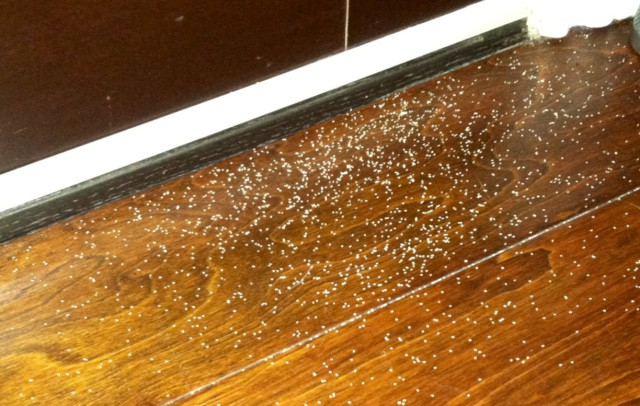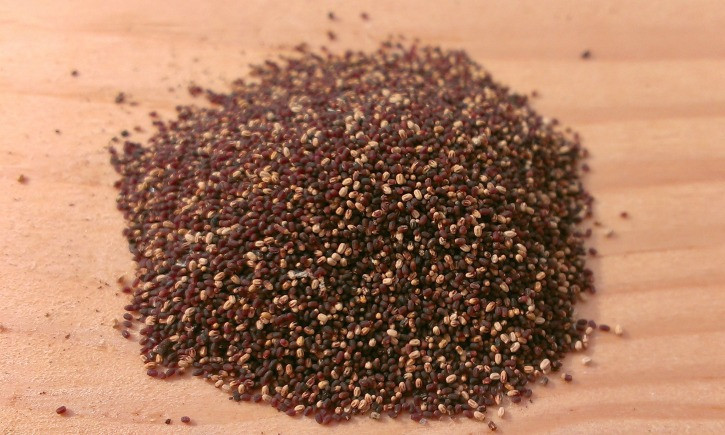Stink bugs feed themselves to survive
This is one of the interesting cases of insect "feces". In addition to eating stink bugs, other insects use their own feces for different purposes , for example to call a mate or even to build a house.
With any animal, almost eating will come with discharge. Except for special cases, especially insects, at some stage they may not eat so there will be no need for discharge. But in general . eating is to discharge! In the eyes of biologists, namely entomology, the feces of these species are also a useful source of information. Especially in the field of pest control in agriculture that mainly comes from insects. Understanding how to eat can help us deal with pests without resorting to pesticides that are not good for the environment.

If sawdust keeps appearing constantly, it is actually insect poop!
According to entomologist Joe Ballenger, basically, the insect's digestive system is almost similar to humans. Their intestines are divided into three parts - the anterior, the middle and the posterior. The previous intestine is where the food after the mouth is stored and crushed there. The following nutrients will be absorbed in the middle intestine. Only the last intestine is slightly different when it not only contains solid waste but also liquid waste is concentrated there. However, instead of leaving "urine" out, the last intestine will retain water and only emit solid waste.
With insects, another interesting point of vertebrate species is that when they "skin" to grow, this "skin" will include their old intestines as well. Because the insect's gut is also a component of the exoskeleton, which functions to attach to organelles.

The fecal matter is a combination of unpolished wood and some other solid waste.
Insect droppings often come in small balls, with sizes depending on the size of the animal. The composition of their faeces is also different, depending on the type of feed input. The beetles that eat wood with feces look like sawdust (which is actually a sawdust). And the cockroach is like dust in the house of mankind. Particularly for termite species, their droppings are extremely useful - their nests are actually made of un-digested manure and wood pieces. Similar to other animals, insect droppings return to the soil and act as fertilizer for plants.
But some insects think of other uses for this "special product" . Like the bark beetle (bark beetle) often add pheromones to their droppings to "invite" other bugs. This "sexually suggestive" hormone works to appeal to partners or initiate other "community " communications between them.
With stink bugs (stinkbug) , the smell is extremely recognizable, when female beetles lay eggs, they cover the eggs with a layer of feces. The purpose of this behavior is to let the fleas after hatching, be able to . eat right away to live! Entomologists found that the stools of stink bugs are accompanied by a number of symbiotic bacteria that work similarly to the antibiotic doses we use to vaccinate children when they are born. Ballenger describes: " If we separate the mother bugs from the eggs, or wash the eggs with antiseptic solutions, the fleas will die because they do not receive these vaccinations."

Stink bugs think of creative vaccinations thanks to . feces.
Symbiotic organisms are interesting for agronomists. They believe that if the target is passed on to important bacteria for this digestive system of insects, farmers can eliminate pests that are less likely to cause adverse effects on the environment than pesticides. traditional.
Other findings of insect droppings are also increasing. Researchers have found many other types of probiotics in the feces of many insects in Thailand, in the feces of woody hornets and in the pest of the pests of coconut trees Conopomorpha cramerella.
But here in nature, there are always special cases. Some insects do not eat when they reach adulthood. So they don't release anything. The plankton or moths are examples of exchanging "adolescence" as they enter adulthood just to do the only thing that is to find partners and reproduce as much as possible.

The moths fasted just to . love.
There are some reverse species, choose to eat but not . discharge for a long time.The set of ribbed insects (lacewing), which specializes in hunting pests, choose to eat only during the larval stage. Their gut has only one input - food only comes in but not out. And when they molt to mature, the first thing this group of insects do is . go to the toilet for the entire childhood!
- Blood-sucking stink bugs are capable of attacking the globe
- The man who was bitten by the bug was unconscious
- Blood sucking bugs contain parasites and drug resistance
- China: 2 people died of stinking bugs
- Insecticide from ... stink bugs
- Blood-sucking stink bugs are raging in America
- Blood sucking bugs are quietly spreading around the world
- Blood-sucking bugs are constantly appearing in people's homes
- Painted with sea berries from insects
- The Ministry of Health officially spoke about kissing bugs
- Close up of kissing bugs sucking blood
- The secret to destroy bed bugs without chemicals
 Why do potatoes have eyes?
Why do potatoes have eyes? 'Tragedy' the world's largest carnivorous life: Death becomes ... public toilet
'Tragedy' the world's largest carnivorous life: Death becomes ... public toilet Tomatoes were once considered 'poisonous' for 200 years
Tomatoes were once considered 'poisonous' for 200 years Detecting microscopic parasites on human face
Detecting microscopic parasites on human face